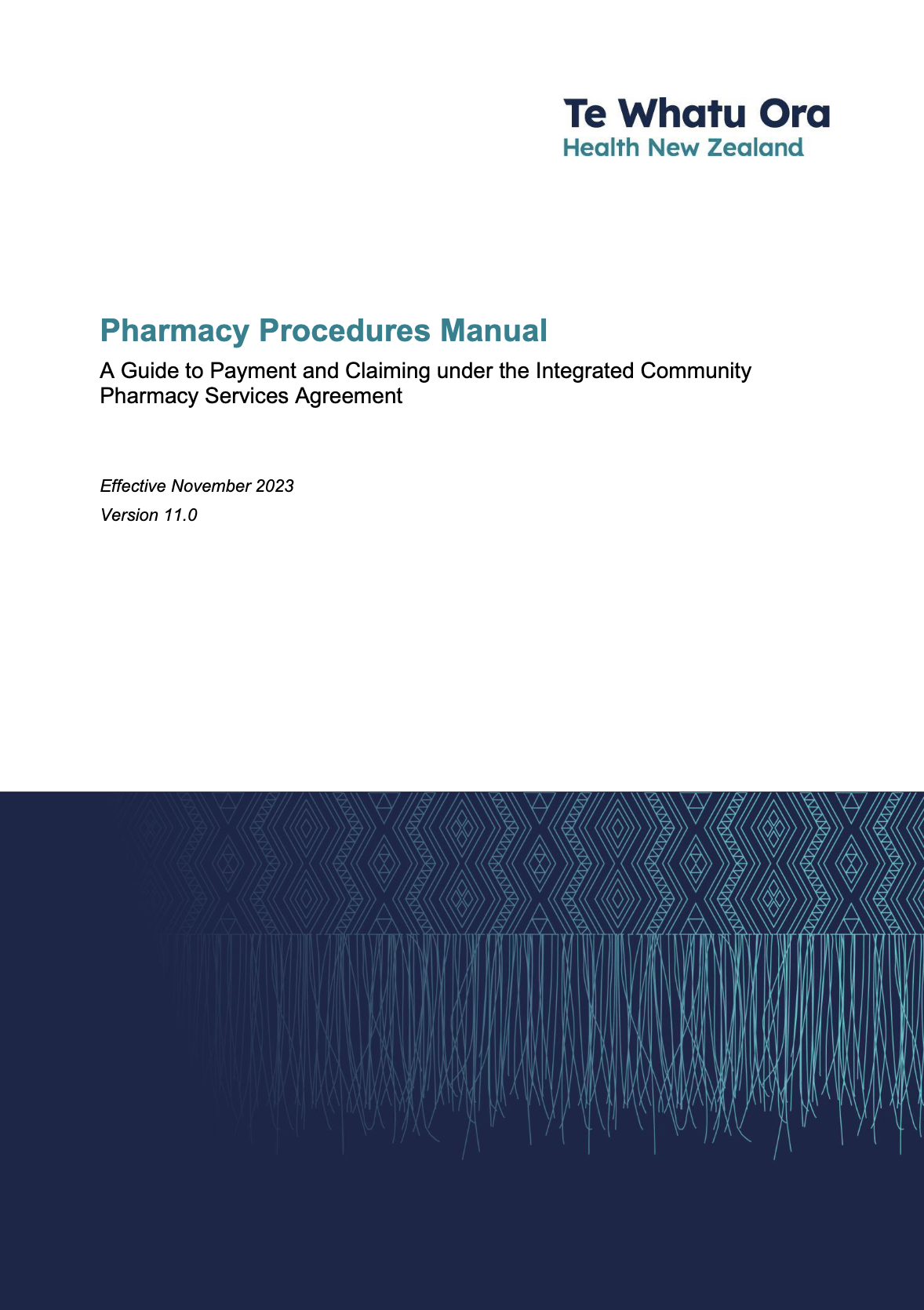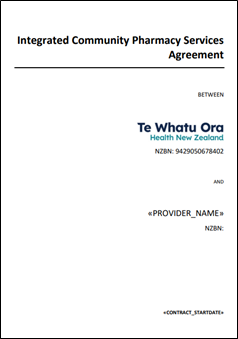A Certificate at Level 4 qualifies individuals to work or study in broad or specialised field(s)/ areas.
A graduate of a Level 4 Certificate is able to:
- demonstrate broad operational and theoretical knowledge in a field of work or study.
- select and apply solutions to familiar and sometimes unfamiliar problems.
- select and apply a range of standard and non-standard processes relevant to the field of work or study.
- apply a range of communication skills relevant to the field of work or study.
- demonstrate the self-management of learning and performance under broad guidance.
- demonstrate some responsibility for the performance of others.
Reference: The New Zealand Qualifications Framework
Learning outcomes
Our focus in Level 4 is on the following topics, each with its own learning outcomes. A learning outcome is a statement of the knowledge, skills and abilities that a learner has achieved at the end of a section of learning.
Professional Practice 1
Learning outcomes:
- 1.1 Monitor own ethical conduct as a Pharmacy Technician in relation to the Code of Ethics.
- 1.2 Provide pharmacy technician services to Māori in accordance with Ti Tiriti o Waitangi principles.
- 1.3 Use suitable communication techniques when informing customers on health-related matters.
- 1.4 Use suitable communication techniques to ensure customers’ understanding of health-related information given.
- 1.5 Apply the parts of legislation and regulations relevant to the core Pharmacy Technician role.
- 1.6 Observe statutory limitations on the role of Pharmacy Technician.
- 1.7 Comply with applicable legislation and regulations as a Pharmacy Technician in the Pharmacy.
- 1.8 Manage dispensary stock in accordance with pharmacy requirements.
- 1.9 Perform calculations for dispensing medicines.
Introduction to Dispensing
Learning outcomes:
- 2.1 Prepare and dispense prescriptions as a Pharmacy Technician.
- 2.2 Implement all required dispensing procedures as a Pharmacy Technician.
- 2.3 Use dispensary software to produce prescription labels.
- 2.4 Dispense pharmaceutical orders as a Pharmacy Technician.
- 2.5 Reconstitute medicines as a Pharmacy Technician.
- 3.1 Dispense medicines under the supervision of a Pharmacist.
- 3.2 Use compliance packaging to prepare prescription medicines for patients.
Introduction to Patient Care
Learning outcomes:
- 4.1 Advise patients on routes of administration for dispensed medicines.
- 4.2 Advise patients on dose forms for dispensed medicines.
- 4.3 Advise patients on the use of accessories for dispensed medicines.
- 4.4 Assess the health of pharmacy clients to determine common health disorder treatment requirements.
- 4.5 Advise pharmacy clients on medicines to treat common health disorders.
- 4.6 Treat and prevent infections using anti-infective therapy.
Qualities of a successful Pharmacy student

This means that by the end of Week 25, you will be able to do all the following:
- "I apply the appropriate laws, codes, and standards to my work tasks and duties."
- "I use critical thinking skills to problem-solve and find advanced dispensing solutions."
- "I use effective communication techniques to provide professional and ethical services to our customers."
- "I advise, guide, and provide information to customers about their medicines."
- "I manage pharmacy stock and inventory using the appropriate requirements for storage and the supply needs of our customers."
- "I think critically to find the best health and wellbeing solutions, support, and advice for our customers."
- "I understand how medicines work and how they affect the human body."
- "Under the supervision of my pharmacist, I prepare and dispense prescriptions."
- "I know what medicines are used to treat a range of common health disorders."
- "I apply the appropriate laws, codes, and standards to my work tasks and duties."

Me tīmata tātou, let's get started with our Level 4 learning. In this week you will cover the following:
- Professional Practice Part 1
- Introduction to Dispensing (Steps 1-2)
- Introduction to Patient Care
Scroll down (or use the navigation menu on the left) to begin Week 1.
Welcome to the online component of Course 1 of the New Zealand Certificate in Pharmacy (Pharmacy Technician) (Level 4).

Course 1 focuses on the professional practice skills and knowledge of a pharmacy technician. Throughout this Level 4 course, you will explore what it means to be a pharmacy technician. Your learning will involve the following aspects of professional practice:
- Dispensary Legislation - complying with and applying the codes, legislation and standards that govern the pharmacy workplace and those related to dispensary requirements.
- Calculations for Dispensing - correctly perform calculations for a variety of situations, including the compounding of medicines.
- Professionalism & Support: Dispensary Stock Management - management of stock following the codes, legislation, standards and SOPs for pharmacy and the pharmacy technician role
- Work Ethically and Professionally - provide ethical and professional services as a pharmacy technician in accordance with codes, standards, and Te Tiriti o Waitangi.
- Communication Techniques - use effective communication skills and techniques that build positive relationships with pharmacy customers and staff, including those used to inform customers on health-related matters.
Throughout your pharmacy technician program, you will find that this course, as well as courses 2 and 3, cover similar topics. These courses have been designed to work in conjunction with each other, providing you with the skills and knowledge necessary to work as a competent pharmacy technician in New Zealand. The program is structured to support your development, ensuring you can work safely, professionally, and legally while meeting the industry standards for pharmacy technicians.
Below, you will see a long list of resources used in this topic, but don’t panic; many of these will be familiar to you, and by the end of your programme, you will know them quite well. We don’t expect you to memorise them, but rather, know what they are about and how to access them when needed.
We recommend that you take some time to gather the resources that we will be referring to throughout this course. Use this template to add the location of each of the following documents, websites, and policies to keep them at hand. Make URLs into links using a right-click and select Link from the context menu.
- Medicines Act 1981
- Medicines Regulations 1984
- Misuse of Drugs Act 1975
- Misuse of Drugs Regulations 1977
- Misuse of Drugs Amendment Regulations (No 2) 2023
- Health Entitlement Cards Regulations 1993
- Health and Disability Commissioner (Code of Health and Disability Services Consumers’ Rights) Regulations 1996
- Privacy Act 1993
- Health Information Privacy Code 1994
- Health (Retention of Health Information) Regulations 1996
- Health Practitioners Competence Assurance Act 2003
- Health (Needles and Syringes) Regulations 1998
- Health and Safety at Work Act 2015
- Treaty of Waitangi Act 1975
- Code of Ethics
- Standards of Practice
- The New Zealand Pharmaceutical Schedule
- The New Zealand Formulary
- Pharmacy Procedures Manual Version 9.0: A Guide to Payment and Claiming under the Integrated Community Pharmacy Services Agreement
- Health and Disability Services Pharmacy Service Standards
- Pharmac website
- Medsafe website
Medicine approval process
Do you know how many different medicines in New Zealand are approved for sale and supply? To find out, read through the Medsafe website and then answer the questions below.
Not all medicines that go through the approval process will be approved. Those that are approved are known as ‘approved medicines’. This means they have been approved for a specific purpose. These are listed on the Medsafe website, as well as those medicines that went through the process but approval was not granted.
In some situations, there may be a need for a person to be treated with a medicine that is safe to use but is not on the list of approved medicines. There may also be a situation where an approved medicine may need to be used for a purpose, condition, patient age, dose, or route other than what it has been approved for (off-label use).
Bpac (2013) explains the legislation on unapproved medicines:
“Section 25 of the Medicines Act allows an authorised prescriber to 'procure the sale or supply of any medicine' for a patient in their care. This means that prescribers may prescribe any medicine to a patient (within their scope of practice), regardless of whether it is approved or unapproved in New Zealand. However, the prescriber must always provide an adequate professional and ethical standard of care, which includes gaining informed consent from the patient for use of the unapproved medicine.
Section 29 of the Medicines Act allows the sale or supply of unapproved medicines. The person or company who supplies the medicine must notify the Director-General of Health of the supply (via Medsafe), and record the name of the prescribing medical practitioner, the patient for whom the medicine was prescribed and the name and place of supply.”
Review the graphic below that describes the differences between approved and unapproved medicines in New Zealand:
Source: healthnavigator.org.nz
What is a Medicine?
The Medicines Act of 1981 describes the legal definition of medicine and the three medicine classification categories. You have looked at these definitions previously. To aid in your learning, see if you can remember what each definition is before selecting the label or (+) sign to reveal the answer.
Is a substance that is manufactured, imported, sold, or supplied for the use of humans for a therapeutic purpose and is likely to achieve its intended action in or on the human body by pharmacological, immunological, or metabolic means.
Example: Sudafed oral tablets to relieve nasal congestion and sinus pain.
Is a medicine that can only be sold in a pharmacy. It can be sold by any member of staff.
Example: Anthisan cream to help relieve the itch from insect bites.
Is a medicine that is sold under a prescription written by a New Zealand registered practitioner who is an authorised prescriber.
Example: Gliclazide for the treatment of type 2 diabetes.
Is a medicine that can be sold only by a pharmacist in a pharmacy or hospital. These medicines are placed on shelves where customers cannot self-select and are sold after a consultation with a pharmacist. A record of the sale must be kept.
Example: Hydrocortisone cream 1% to relieve local itch and inflammation.
These are medicines that can be sold anywhere by anyone.
Example: Paracetamol for mild pain and to reduce fever.
Prescribing requirements
As a pharmacy technician, it is important that you know both the legal and funding requirements for prescribing.
- Legal requirements are set out in various pieces of legislation such as the Medicines Act, Medicines Regulations, Misuse of Drugs Act, Misuse of Drugs Regulations, and Health Practitioners Competence Assurance Act.
- Funding requirements are set out by the government agency Pharmac. Pharmac manages what and how medicines are subsidised.
Check your knowledge of the legal requirements for medicine prescribing by completing this activity of six questions.
Hint: You may want to check your understanding by going to the Medicines Act 1981, section 2, and the Medicines Regulations 1984 section 39.
Note: The dots beneath the first question indicate how many questions are in this type of activity (there are six in this case). Use the icons on the right to move forward and backward through them. Click the check button to check your answers. If you don't get all the answers correct, be sure to select Show solution so you can pick up the learning.
Prescribing requirements for controlled medicines
This may be an area of prescribing that you are less familiar with. These requirements are described in the following legislation:
- Misuse of Drugs Act 1975
- Misuse of Drugs Regulations 1977
- Misuse of Drugs Amendment Regulations (No 2) 2023
- Health Practitioners Competence Assurance Act 2003
Under the Misuse of Drugs legislation, prescribers permitted to prescribe controlled drugs are:
- medical practitioners.
- dentists.
- nurse practitioners.
- midwives.
- designated prescriber nurses.
- designated prescriber pharmacists.
As with prescribers of non-controlled drugs, prescribers of controlled drugs must be registered in New Zealand in their profession and hold a current annual practising certificate as described in the Health Practitioners Competence Assurance Act.
For each prescriber, there are specific restrictions on what type and class of controlled medicine they can supply and the maximum period of supply.
Prescription Forms
As you know, a prescription form must contain specific information to meet legal and funding requirements. These requirements can be found in the following documents:
- Medicines Regulations 1984
- Misuse of Drugs Act 1975
- Misuse of Drugs Regulations 1977
- Misuse of Drugs Amendment Regulations (No 2) 2023
- Pharmacy Procedures Manual 2023
Prescriptions may be written in two ways:
- Paper: This is where the customer is given a form that is printed and signed by the prescriber. The customer then takes the paper form to their pharmacy for dispensing and collection.
- Electronic: This is where the prescriber uses the e-prescription service (NZePS) to write a prescription. The e-prescription is sent to the customer’s pharmacy for dispensing and collection.
Controlled drug and non-controlled drug prescription forms are different but have many of the same requirements. To learn about the requirements of a non-controlled drug prescription form, read page 26 of the Pharmacy Procedure Manual and the Medicines Regulations 1984, regulation 41. When you are done, return here and test your knowledge by completing the four drag-and-drop questions below:
Self-directed learning activity
To complete these activities, you will need to find and consult with your resources.
Read pages 36-37 of the Pharmacy Procedure Manual to help you answer the following five single- and multiple-choice questions about controlled drug prescription forms. You may also want to consult the Misuse of Drugs Regulations 1977, regulations 29, 31 and 31A.
Ka pai! You have completed the first week of learning for Professional Practice Part 1.
Welcome!
You are now starting the online component of Course 2: Dispensing and Course 3: Dispensing 1A of the New Zealand Certificate in Pharmacy (Pharmacy Technician) (Level 4).

One of the key responsibilities of a pharmacy technician is to dispense medicines safely and accurately to the pharmacy customer. These two courses will focus on all you need to know in order to do this. You will learn the practices and procedures for dispensing a variety of prescription types and get plenty of opportunity to put your learning into practice during your work placements.
In the community pharmacy setting you will come across a variety of prescriptions types including controlled medicines and pharmaceutical orders. We encourage you to take every opportunity to read, discuss, ask questions, observe, and carry out dispensing a variety of prescriptions under the supervision of your tutors and pharmacy workplace team.

The more you do, the more you learn.
The more you put in, the more you get out.
Make the most of your learning!
In this lesson, we begin our exploration of the dispensing process. You will learn how to prepare and carry out the required procedures to dispense prescriptions in your role as a pharmacy technician.
Some of the resources that we will be referring to throughout this course include:
- Medicines Act 1981
- Medicines Regulations 1984
- Misuse of Drugs Act 1975
- Misuse of Drugs Regulations 1977
- Misuse of Drugs Amendment Regulations (No 2) 2023
- Pharmacy Procedures Manual 2021 version 9.0
- Health and Disability Services Pharmacy Service Standards 2010
- Pharmacy Council Code of Ethics 2011
- Pharmacy-Specific SOP’s
- Pharmaceutical Schedule
- New Zealand Formulary
- Ministry of Health
Below is some more information on the agencies and resources that direct your dispensing work as a pharmacy technician.
Te Whatu Ora

Te Whatu Ora is a public health agency established in 2022 by the New Zealand Government to replace the previous 20 district health boards. Te Whatu Ora leads and manages the running of the health system of New Zealand and works alongside Te Pou Hauora Tūmatanui (the Public Health Agency) and Te Aka Whai Ora (the Māori Health Authority).
Pharmacy Procedures Manual

The Pharmacy Procedures Manual is a resource for community pharmacies. It includes information on the procedures and processes required for claiming funding as part of the Integrated Community Pharmacy Services Agreement (ICPSA) and other relevant procedures and processes linked to the current legislation and pharmacy service delivery. Throughout your programme, we will be looking at the parts of this manual that is relevant to the pharmacy technician role and scope of practice.
Integrated Community Pharmacy Services Agreement(ICPSA)
Te Whatu Ora, Integrated Community Pharmacy Services Agreement(ICPSA)
The ICPSA is a contract between the government (Te Whatu Ora) and community pharmacies that outlines the funding and provision of community pharmacy services. The aim of the contract is to ensure that patients have access to high-quality, consistent care across all community pharmacies, regardless of where in New Zealand the patient lives. It also aims to help communication between healthcare providers so that patients can receive more coordinated and effective care.
Dispensing and the dispensing process
You probably have a good idea of what dispensing means, but let’s recap what the legal definition is and what this means in simple terms.
Legal definition
Here's an excerpt of how dispensing is defined in The Medicines Act 1981, Section 2: Interpretation:
2 Interpretation
(1) In this Act, unless the context otherwise requires, -
dispensing, in relation to a medicine, includes, without limitation, -
(a) the preparation of that medicine for sale to the public (whether in response to the issue of a prescription or a request by an individual to be supplied with the medicine); and
(b) the packaging, labelling, recording and delivery of that medicine.
This excerpt from the Medicines Regulations 1984, Section 42: Dispensing of prescription medicines, details who can dispense medicines and under what conditions they may dispense.
42 Dispensing of prescription medicines
(1) Except as provided in subclause (2), no person other than an authorised prescriber, veterinarian, pharmacist, pharmacy graduate, a pharmacy technician, a student, or dispensary technician may dispense a prescription medicine.
(1A) The following persons may not dispense prescription medicines unless under the direct personal supervision of a pharmacist:
(a) dispensary technicians:
(b) pharmacy graduates:
(c) pharmacy technicians:
(d) students.
in simple terms
For the purposes of this course, we'll use the following definition:
| Dispensing process | All of the actions, procedures, and processes taken from the point of receiving a prescription to the prescription being collected by the customer or the person whom they have nominated to collect it. |
Prescriptions
In Course 1, you will also be exploring prescriptions but from the perspective of the legislation and funding requirements. In this course, we will recap some of the learning from Course 1, but our main focus is on prescriptions from a dispensing viewpoint.
Prescription formats
You will encounter a variety of prescriptions in a community pharmacy.
Paper: This is a physical prescription written by a healthcare provider and handed to the patient, who then takes it to their pharmacy for dispensing. Prescriptions cannot be dispensed if they do not meet all the requirements set out in the legislation.
Expiry: Prescriptions expire and cannot be dispensed six months after the date on which it was issued unless it is for the contraceptive pill. In this case, the prescription is valid for nine months from the date of prescribing.
For a prescription to be subsidised, it must also meet the funding requirements as set out in the pharmacy procedures manual. Funding on a prescription expires three months after the date on which it was issued. This means the prescription is still valid, but any subsidies that may have been applied are no longer available, and the customer will pay the full price.
Limit on Supply: The quantity of medicine that can be supplied on a prescription is three months supply, but if it is an oral contraceptive, the quantity is six months’ supply.
These are becoming increasingly common in New Zealand. They are similar to paper prescriptions but are generated and transmitted electronically using the NZePS by the prescriber to the pharmacy. This type of prescription is usually more convenient for patients as it can be sent directly to the pharmacy from the doctor's office.
In some cases, prescribers may email a prescription directly to the pharmacy. Email prescriptions are becoming less common due to the use of the NZePS.
In some situations, prescriptions can be given verbally over the phone. Legally, telephone prescriptions can only be taken by a pharmacist who personally knows the prescriber. The verbal prescription is then followed up by a written one.
Controlled drug prescriptions are written on a specific paper CD prescription form. If sent via the NZePS format, then a paper form must follow two days later.
Expiry: Class A & B CDs must be dispensed within seven days of the prescribing date and within six months for Class C.
Limit on supply: The quantity of CDs that can be supplied at one time is dependent on who the prescriber is and the Class of drug they are prescribing. This information can be found in the Misuse of Drugs Act & Legislation as well as in the Pharmacy Procedure Manual.
These are prescriptions that have been issued for ongoing medication needs, such as for chronic conditions. The prescription will usually have a specified number of repeats that can be dispensed by the pharmacy without the need for the patient to visit their healthcare provider again.
A “split script” or “held script” is where items on a single Prescription Form are processed and dispensed on different days. The decision to “split” or “hold” a Prescription Form is made before processing and maybe because the customer cannot afford all of the items or doesn’t need them at this point. It may also be because the pharmacy is awaiting stock of items before dispensing every item on the form.
Signature exempt prescriptions
Some prescriptions do not require the physical signature of the prescriber. These are referred to as signature-exempt prescriptions.
There are two types of signature-exempt prescriptions. These are:
- NZePS prescriptions with a barcode
All NZePS prescriptions, including controlled drug prescriptions, are signature-exempt. - NZePS prescriptions without a barcode
This is a temporary signature exemption up to the year 2024. This exemption does not include prescriptions for class A, B and C controlled drugs but can include class C exempt or partially exempt controlled drugs as defined by the Misuse of Drugs Act 1975
Self-directed learning activity
- Read the following three tasks.
- Visit the webpage Signature Exempt Prescriptions and remote prescribing to help you with responding to the three tasks.
- Create a new journal post with the title of Week 1: Signature Exempt Prescriptions. The title will help you stay focused, and it provides a quick overview of your post.
- In your journal post, enter your responses to the three activities.
- Save and publish your journal post to 'All Course Users. (your post will then become visible to your tutor and peers).
- Ensure you complete your own work before you review the journal posts of your peers.
- Explore the Te Whatu Ora webpage linked above to learn more about signature-exempt prescriptions. When you have finished reading, find out the following:
- Is it legal for a pharmacist to receive an NZePS barcoded signature exempt prescription — if so, under what conditions?
- Go to the Pharmacy Procedure Manual Version 11 2023. Skim and scan pages 0-16 to answer these questions:
- What is the meaning of a ‘community pharmaceutical’?
- What is the meaning of a ‘pharmaceutical’?
- What do the letters ‘ICPSA’ mean?
- What do the letters ‘PhMS’ mean?
- What do the letters ‘MoH’ mean?
- Go to the Integrated Community Pharmacy Services Agreement. Skim and scan this document to answer these questions:
- Who are the two parties that this agreement is between?
- According to Part E of the agreement:
- What is meant by ‘dispensing’?
- What is meant by ‘He Korowai Oranga’?
- What is meant by ‘medical practitioner’?
- What is meant by ‘pharmacist’?
- What is meant by ‘provider’?
Well done! You have completed the first week of learning for Introduction to Dispensing.
Welcome
You are now starting the online component of Course 4: Patient Care 1, of the New Zealand Certificate in Pharmacy (Pharmacy Technician) (Level 4).

This course is all about the patient.
When a patient is so much more
You will notice that a patient is also referred to as a:
- customer
- client
- consumer.
But it's even more than that.
In essence, the patient is the individual and the family/whānau to whom you provide health and well-being pharmacy care and services to.
In this course, we will focus on exploring and developing the following knowledge and skills:
- Advising the customer on routes of medicine administration — how medicine gets into the body system, such as an oral tablet
- Advising the customer on medicine dose forms — the form of a medicine such as a tablet or a liquid
- Advising the customer on the use of accessories for medicine administration — equipment for the delivery of medicine, such as a spacer for inhaled medicines
- Effective communication techniques to support customer care
- Assess the health of the customer to determine common minor health disorders and their appropriate treatment
- How to minimise and control infections, including the use of anti-infective agents
Not only will you be exploring these topics in class, but you will also have plenty of opportunities to extend your knowledge while on work placement. We encourage you to observe experienced staff interacting with customers, ask questions and take every opportunity to put your learning into practice as you contribute to providing excellent patient care.

In this lesson, our focus is on the important role you play in advising the customers you serve as a pharmacy technician. Beyond dispensing medications, you will also provide guidance on how these medicines should be taken. This guidance ensures that customers receive the maximum intended benefits from their prescribed treatments and can safely manage their medications at home.
Pharmacology Introduction
Pharmacology is the science concerned with the study of how medicines interact with molecules in the body and the effect they have on the body. You will dive deeper into Pharmacology later in this programme in Course 8: Patient Care 2, but for now, it is worth being introduced to some basic concepts and terminology.
Pharmacology can be broken into two branches as follows:
Environments
Pharmacologists refer to the internal and external environments of the body. As you know, the human body is made up of many different and specialised cells as well as the spaces between the cells. The inside of the body is discussed in the following way:
Dose and dose regime/dosage
The following is terminology you will be familiar with, but please select the label or (+) sign to expand the section to see what we mean when we use the term:
When we talk about dose, we are referring to the amount of medicine taken at one time.
For example: Take ONE tablet or Take 500mg.
When we talk about dose regime (sometimes called dosage), we are referring to the set of instructions for how to take the medication. This includes how much to take, when to take it, and how long to take it for.
For example: Take ONE tablet THREE times daily with food until finished.
When prescribing medicine (also referred to as drugs), the aim is to give the person the dose of the medicine that achieves the desired effect without causing harmful side effects. This dose is determined by the testing, experiments, and trials carried out on the medicine before it is made available for use.
It is important that medicines are tested to ensure that they are not teratogenic or carcinogenic.
Watch: GCSE Biology - Drug Development and Testing - Clinical Trials #45 (6:47 minutes)
Watch this video to give you an overview of the processes involved in the developed testing of new medicines. Then, fill in the blanks in the activity below. You may want to watch the video more than once.
In theory, every person will respond the same to a given dose of a specific medicine, but in practice, this is not always the case. There may be individual variations in how people respond due to factors such as:
- genetics
- gender
- age
- weight
- illness or disease
- other medications being taken.
These factors are taken into consideration by the prescriber when selecting the most appropriate dose and dose regime for each patient. Let’s now look at some other terminology that is used when referring to dose.
Self-directed learning activities:
- Watch the following two videos.
- Go to the forum for this topic by clicking on 'Forum' in the navigation pane or by clicking here: Week 1: Introduction to Patient Care: Self-directed Learning Activity.
- In the forum, enter your thoughts and reflections about the two videos. Be honest and authentic in expressing why the videos might be significant and how they impact you.
- Ensure you complete your own work before you read and reply to the posts of your peers to see how they interpreted the videos.
Watch: Pharmacokinetics: How Drugs Move Through the Body (7:55 minutes)
Watch: Pharmacodynamics: Mechanisms of Drug Action (8:15 minutes)

